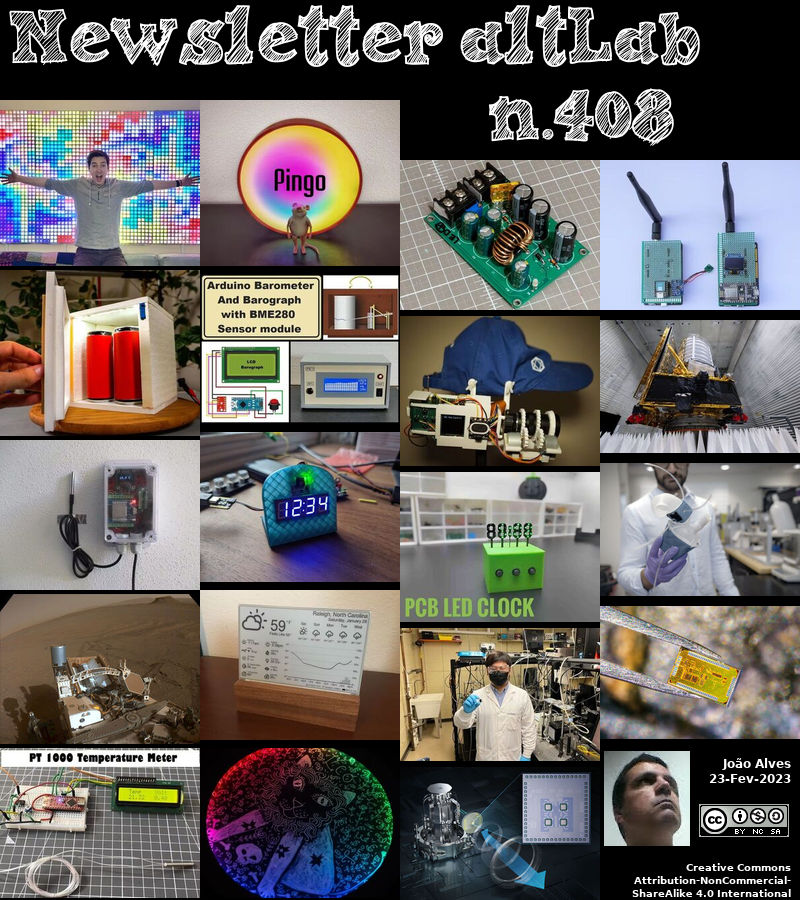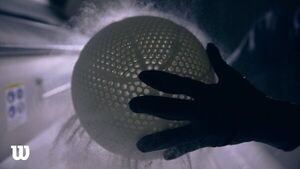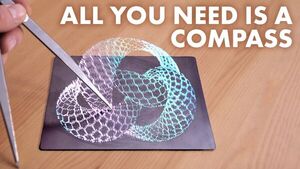2023-02-23 - Nº 408
Editorial
Esta é a Newsletter Nº 408 que se apresenta com o mesmo formato que as anteriores. Se gostar da Newsletter partilhe-a!
Todas as Newsletters encontram-se indexadas no link.
Esta Newsletter tem os seguintes tópicos:
Faz hoje anos que nascia, em 1884, o bioquímico polaco-americano Casimir Funk. Ele cunhou o termo "vitamina". Em 1912, como tinha sido anteriormente proposto por Sir Frederick Hopkins, Funk insistiu na ideia de que doenças como o beriberi, escorbuto, raquitismo e pelagra eram causadas pela falta de substâncias vitais na dieta. A sua investigação do factor anti-beriberi de Christiaan Eijkman tinha mostrado que se tratava de uma amina (uma substância orgânica com moléculas contendo o grupo -NH2 amina). Funk assumiu (embora incorrectamente) que todas as substâncias semelhantes eram também aminas, e nomeou tais factores como vitaminas ("aminas vivas"). Quando mais tarde se descobriu que nem todos os factores eram aminas, a ortografia da palavra foi alterada para "vitamina". O ácido nicotínico isolado por funk do polimento do arroz, mais tarde utilizado contra pelagra por Warburgh e Elvehjem.
Faz também hoje anos que nascia, em 1924, o físico americano Allan MacLeod Cormack. Nascido na África do Sul, ele formulou os algoritmos matemáticos que tornaram possível o desenvolvimento de uma nova e poderosa técnica de diagnóstico, o processo de imagem de raios X transversal conhecido como tomografia axial computorizada (CAT) scanning. Descreveu-o pela primeira vez em dois artigos em 1963 e 1964. A tomografia de raios X é um processo pelo qual uma imagem de uma fatia imaginária através de um objecto (ou do corpo humano) é construída a partir de informação de detectores que giram à volta do corpo. Por este trabalho, foi-lhe atribuída uma parte (com Sir Gregory Hounsfield) do Prémio Nobel de 1979. Cormack foi invulgar no campo dos laureados com o Nobel porque nunca obteve o grau de doutor em medicina ou qualquer outro campo da ciência.
Por fim, faz hoje anos que nascia, em 1951, o matemático japonês Shigefumi Mori. Ele fez importantes contribuições no campo da geometria algébrica. O seu principal trabalho, no qual provou a existência de modelos mínimos para todas as variedades algébricas tridimensionais (Janeiro de 1988), foi apelidado de Programa de Mori. No espaço de dez anos desde o seu primeiro trabalho publicado, Mori tinha assim completado o que muitos disseram nunca poder ser feito. Em 1979, Mori publicou os seus primeiros resultados principais, uma prova da conjectura Hartshorne, que afirmava que uma certa classe de variedades algébricas são projectivas por natureza. Por outras palavras, estas variedades ou conjuntos de soluções para determinadas equações polinomiais poderiam ser descritas utilizando a geometria projectiva. Recebeu a Medalha Fields em 1990 pelo seu trabalho em geometria algébrica.
Em 1947 era fundada a ISO - International Organization for Standardization. Publicou mais de 24.500 normas internacionais que cobrem quase todos os aspectos da tecnologia e do fabrico. Tem 811 comités técnicos e sub-comités para cuidar do desenvolvimento de normas. A organização desenvolve e publica normalização em todos os campos técnicos e não técnicos, à excepção da engenharia eléctrica e electrónica, que é tratada pela IEC.
Nesta semana que passou foi lançada mais uma versão do Kernel Linux. A versão 6.2 serve um conjunto substancial de novas capacidades de hardware, nomeadamente o apoio out-of-the-box para gráficos Intel Arc e, mantendo-se com a Intel, o apoio ao driver On-Demand da Intel (a sua funcionalidade "in-app purchases for extra CPU features") nas CPUs de 4ª geração Xeon. Os CPUs mais antigas da Intel Skylake ganham um aumento de desempenho com o Call Depth Tracking, uma característica que a Phoronix descreve como uma "atenuação menos dispendiosa" do que a Especulação Restrita Indirecta (IBRS) também concebida para lidar com a vulnerabilidade de execução especulativa Retbleed CPU nestes chips. O driver de de filesystem de NTFS3 e SquashFS têm mais opções, foi adicionado suporte para os comandos DualShock 4 da Sony, o Raspberry Pi passa a suportar 4K @ 60Hz e foram introduzidas mais um conjunto diverso de melhorias em diversas outras partes do kernel.
De assinalar também que este mês o lançamento do KiCad 7. Este software para desenho de PCBs tem ganho popularidade não só por ser uma ferramenta open-source mas também porque tem vindo a dar resposta às solicitações da comunidade em termos de funcionalidades e correção de problemas. Esta nova versão tem cerca de 6000 modificações, que corrigiram cerca de 1200 problemas e acrescentam muitas outras novidades. De entre as novidades destaca-se a possibilidade de utilização de Fontes customizadas, caixa de texto, gestão automatizada de atualização de plugins, introdução de uma cli, arrastamento ortogonal, ligações a 45º, modo de simulação, melhorias no roteamento de pistas entre outros.
Na Newsletter desta semana apresentamos diversas noticias, artigos científicos, projetos de maker e alguns vídeos interessantes. São apresentadas as revistas Hackspace Mag nº64 e a MagPI nº127 de Março.
 João Alves ([email protected])
João Alves ([email protected])
O conteúdo da Newsletter encontra-se sob a licença  Creative Commons Attribution-NonCommercial-ShareAlike 4.0 International License.
Creative Commons Attribution-NonCommercial-ShareAlike 4.0 International License.
Novidades da Semana

Linux Kernel 6.2 Released, This is What’s New
" new version of the Linux kernel is available with a collection of important hardware, performance, and security improvements. Announcing the Linux kernel 6.2 release on the Linux kernel developer mailing list (LKML), creator Linus Torvalds urges people to try it out, noting: “Maybe it’s not a sexy LTS release like 6.1 ended up being, but all those regular pedestrian kernels want some test love too.” As you know, the Linux kernel is developed and maintained by a worldwide community of engineers and enthusiasts. While a great number of those who contribute to the Linux kernel do so as part of their day job, many others do it in their free time of their own accord, and on their own terms — and to them we are grateful! With that gratitude in mind, let’s take a closer look at what’s new in Linux 6.2… Linux 6.2: New Features Fittingly for the first kernel release this year, Linux 6.2 serves up a substantial set of new hardware enablement, mostly notably out-of-the-box support for Intel Arc graphics and, staying with Intel, support for Intel’s On-Demand driver (their ‘in-app purchases for extra CPU features’ feature) in 4th-Gen Xeon CPUs. Older Intel Skylake CPUs gain a performance boost with Call Depth Tracking, a feature Phoronix describes as a “less costly mitigation” than the Indirect Branch Restricted Speculation (IBRS) also designed to address the Retbleed CPU speculative execution vulnerability on these chips. Linux 6.2 is the first version of the Linux kernel to offer mainline support for the Apple M1 Pro, Max, and Ultra chips as work done by Asahi Linux’s developers was upstreamed." [...]
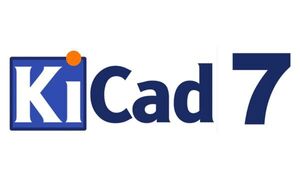
KiCad Version 7.0.0 Released
"The KiCad project is proud to announce the release of version 7.0.0. KiCad 7 is a significant upgrade from KiCad 6, and comes with a number of exciting new features as well as improvements to existing features. The KiCad project hopes you enjoy version 7! Head to the KiCad download page to get your copy of the new version (note that some packages may still be in the process of being released at the time this announcement is published). Many thanks to all of the hard working folks who contributed to KiCad during the version 7 development cycle. In accordance with the KiCad stable release policy, KiCad 6.x will no longer be maintained, and we will release bug fix versions of KiCad 7.x over the next year as we develop KiCad 8." [...]
Outras Notícias

Study Finds Venus’ ‘Squishy’ Outer Shell May Be Resurfacing the Planet
"The research uses archival NASA data to show that Venus may be losing heat from geologic activity in regions called coronae, possibly like early tectonic activity on Earth. Earth and Venus are rocky planets of about the same size and rock chemistry, so they should be losing their internal heat to space at about the same rate. How Earth loses its heat is well known, but Venus’ heat flow mechanism has been a mystery. A study that uses three-decade-old data from NASA’s Magellan mission has taken a new look at how Venus cools and found that thin regions of the planet’s uppermost layer may provide an answer. Our planet has a hot core that heats the surrounding mantle, which carries that heat up to Earth’s rigid outer rocky layer, or lithosphere. The heat is then lost to space, cooling the uppermost region of the mantle." [...]

IBM, Vodafone, and GSMA Members Outline Critical Pathways to Protect Telcos Against Quantum-Era Cyberthreats
"Experts say adoption of standards within the next few years is essential to help secure telco data and infrastructure from quantum-powered cyberattacks As part of the Post-Quantum Telco Network Taskforce, GSMA has published, with contributions from members IBM, Vodafone, and others, the Post Quantum Telco Network Impact Assessment: an in-depth analysis of the quantum security threats facing the telecommunications industry and a detailed, step by step list of potential solutions to prepare for these threats. The report, which debuted ahead of GSMA’s annual Mobile World Congress in Barcelona, maps out a clear path for telco organizations to work across their ecosystems to protect data from cybercriminals acting today to tap into the potential power of future quantum computers. It includes: A telco-specific assessment of the business risk of quantum cyber threats, including four of the highest impact attack types: store now, decrypt later; code signing and digital signatures; rewriting history; and key management attacks. Discussion of standardization for hardware and software changes, such as SIM cards, public key infrastructure, digital certificates and CPE devices. Specific approaches to quantum-safe algorithms and risk assessment frameworks, including code-based, lattice-based, hash-based, multivariate-based, and hybrid approaches. Timelines of several government plans that have been launched to implement quantum-safe encryption (Australia, Canada, China, France, Germany, Japan, New Zealand, Singapore, South Korea, the UK and the U.S.)." [...]
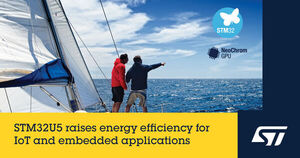
New microcontrollers from STMicroelectronics expand STM32U5 series, raising performance and energy efficiency for IoT and embedded applications
"STMicroelectronics (NYSE: STM), a global semiconductor leader serving customers across the spectrum of electronics applications, has expanded its STM32 family of advanced microcontrollers (MCUs) with extra STM32U5 devices that raise performance while squeezing power consumption for longer runtimes and energy efficiency. The STM32U5 has also received NIST embedded random-number entropy source certification ; the industry’s first to receive this endorsement. The new MCUs extend the range of code and data storage to 128Kbyte Flash for cost-sensitive applications, while also adding high-density versions for complex applications and sophisticated smartphone-like user interfaces. Among these, the STM32U59x/5Ax with 4Mbyte Flash and 2.5Mbyte SRAM has the largest on-chip memory of any STM32 MCU to date. With their increased capabilities, the new MCUs enhance deeply embedded applications like environmental sensors, industrial actuators, building automation, smart appliances, wearable devices, eMobility controls, and others, especially in remote, difficult to access locations. As billions of such devices are being deployed worldwide for smart living and working, ST’s new MCUs accelerate progress by boosting performance, enhancing energy efficiency, and strengthening cybersecurity." [...]

NASA’s Perseverance Rover Set to Begin Third Year at Jezero Crater
"After completing the first sample depot on another world, the rover continues its hunt for Mars rocks worthy of study on Earth. NASA’s Perseverance rover will celebrate its second anniversary on the surface of Mars Saturday, Feb. 18. Since arriving at Jezero Crater in 2021, the six-wheeled, nuclear-powered rover has been examining geologic features and collecting samples of the Red Planet that are central to the first step of the NASA-ESA (European Space Agency) Mars Sample Return campaign. Scientists want to study Martian samples with powerful lab equipment on Earth to search for signs of ancient microbial life and to better understand the processes that have shaped the surface of Mars. “Anniversaries are a time of reflection and celebration, and the Perseverance team is doing a lot of both,” said Perseverance project scientist Ken Farley of Caltech in Pasadena. “Perseverance has inspected and performed data collection on hundreds of intriguing geologic features, collected 15 rock cores, and created the first sample depot on another world." [...]

Renesas Collaborates with AMD to Demo Full RF and Digital Front-End Design for 5G Active Antenna Systems
"The RF Front End Includes RF Switches and Pre-Drivers and Is Integrated with the AMD RFSoC Digital Front End ZCU Evaluation Kit Renesas Electronics Corporation (TSE:6723), a premier supplier of advanced semiconductor solutions, today announced plans to showcase a full RF front end solution for 5G Active Antenna Systems (AAS) radios in collaboration with AMD. Paired with the field-proven AMD Zynq® UltraScale+™ RFSoC Digital Front End OpenRAN Radio (O-RU) Reference Design, the RF front end includes RF switches, low-noise amplifiers and pre-drivers. It offers a complete solution to meet the demand of the growing mobile network infrastructure market. The reference platform will be demonstrated at the Mobile World Congress in Barcelona, February 27 – March 2 at the AMD booth (#2M61 Hall 2). The new 5G design platform integrates all the essential RF and digital front-end hardware for base stations operating in the Open Radio Access Network (O-RAN) ecosystem. This includes a high-isolation multi-throw DPD (Digital Pre-Distortion) switch, a high-gain and linearity pre-driver in a compact package, an integrated switch and Low Noise Amplifier (LNA) with input signal coupling functionality." [...]
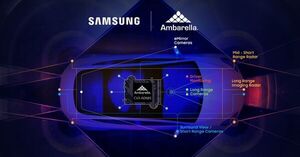
Samsung Electronics’ World-Class 5nm Technology Selected by Ambarella for New Automotive AI Central Domain Controller
"New CV3-AD685 System-on-Chip advances Autonomous and Advanced Driver Assistance System (ADAS) applications, providing single-chip solution for multi-sensor fusion and path planning Samsung Electronics, a world leader in advanced semiconductor technology, and Ambarella, Inc. (NASDAQ: AMBA), an edge AI semiconductor company, today announced that Samsung’s Foundry business is providing its 5-nanometer (nm) process technology to Ambarella for its newly announced CV3-AD685 automotive AI central domain controller. This collaboration will help transform the next generation of autonomous driving vehicle safety systems by bringing new levels of AI processing performance, power and reliability. The CV3-AD685 is the first production version of Ambarella’s CV3-AD family of automotive AI central domain controllers with Tier-1 automotive suppliers announcing they will offer solutions using the CV3-AD system-on-chip (SoC) product family. Samsung’s 5nm process technology is optimized for automotive-grade semiconductors with extremely tight process controls and advanced IP for exceptional reliability and outstanding traceability. Ambarella will rely on Samsung’s 5nm process maturity and the technology’s solid track record. This 5nm process is backed by the company’s extensive experience in automotive foundry process, IP and service package development to enable manufacturers to create cutting-edge innovations in assisted and automated mobility." [...]

Raspberry Pi Debug Probe: a plug-and-play debug kit for $12
"Ever since we launched Raspberry Pi Pico, and our RP2040 microcontroller, in January 2021, people have been using one Pico to debug programs running on another. Inspired by this trend, today we’re launching the Raspberry Pi Debug Probe, a complete debug hardware solution for Arm-based microcontrollers, powered by RP2040, and priced at just $12. The Raspberry Pi Debug Probe provides: - A USB to Serial Wire Debug (SWD) bridge - A generic USB serial adapter - Cables to connect to a host computer, and to the debug target While it has been designed with Raspberry Pi Pico, and other RP2040-based targets, in mind, the Raspberry Pi Debug Probe can be used to debug any Arm-based microcontroller that provides an SWD port with 3V3 I/O. Bug hunting If you’re anything like me, you enjoy writing computer programs, but hate tracking down the resulting bugs. But bug hunting is a necessary evil, and if you want to hunt bugs, sooner or later you’re going to need a debugger. While most debuggers offer a common set of basic capabilities (single stepping, breakpoints, inspection of variables and memory), these capabilities are provided in different ways depending on your choice of language and operating environment." [...]
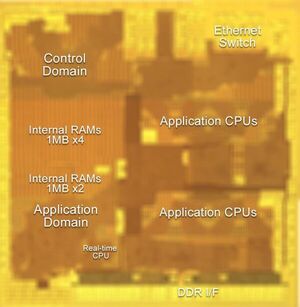
Renesas Develops Technologies for Automotive Communication Gateway SoCs
"Four Key Technologies Announced at ISSCC 2023 Will Enable High Performance, Low Power Consumption, Fast Start-up and Security. Renesas Electronics Corporation (TSE: 6723), a premier supplier of advanced semiconductor solutions, today announced that it has developed four technologies for system-on-chip (SoC) devices for in-vehicle communication gateways. These SoCs are expected to play a crucial role in defining the next-generation electrical/electronic (E/E) architecture in automotive systems. SoCs for automotive gateways must provide both high performance to implement new applications such as cloud services, and low power consumption when they are not in use. They also need to deliver fast CAN response to support instant start-up. Additionally, these SoCs need to provide power-efficient communication technology that enables network functions as a gateway using limited power and security technology to enable safe communication outside the vehicle." [...]

STMicroelectronics reveals ultra-compact, low-power, NB-IoT industrial modules with GNSS geo-location capability
"STMicroelectronics’ ST87M01 ultra-compact and low-power modules combine highly reliable and robust NB-IoT data communication with accurate and resilient GNSS geo-location capability for IoT devices and assets. The fully programmable, certified LTE Cat NB2 NB-IoT industrial modules cover worldwide cellular frequency bands and integrate advanced security features. As one of the first IoT cellular products worldwide offered in accordance with the latest 3GPP Release 15, the ST87M01 provides extended multi-regional LTE coverage. The integrated native GNSS receiver with multi-constellation access ensures enhanced and accurate localization along with optimized power savings features while operating during NB-IoT sleep time slots. The module itself and all the internal ICs are entirely conceived, designed, and industrialized by ST, which ensures the complete control and management of the bill of materials and supply chain. This represents a unique market offer in terms of product quality, security and longevity." [...]
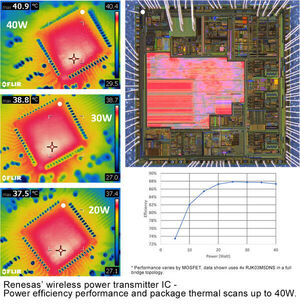
Renesas Presents Wireless Power Transmitter Technology for Portable Device Charging at ISSCC
"New Wireless Device Charging Technology Improves Efficiency, Measurement Accuracy and User Safety While Reducing EMI. Renesas Electronics Corporation (TSE: 6723), a premier supplier of advanced semiconductor solutions, today announced that the company is presenting advancements of charging technology for mobile devices at the prestigious International Solid-State Circuits Conference (ISSCC) in San Francisco, February 19-23. During the conference, Renesas describes its single-chip wireless power transmitter solution that measures AC and DC transmitter power for improved accuracy and safety. The presentation also includes details of a transmitter technology with adaptive Zero-Voltage Switching (ZVS) that achieves reduced electromagnetic interference (EMI) and higher power transmission efficiency. These technical capabilities enable wireless power transmission up to 15W with a Qi power receiver (PRx) and up to 40W with proprietary PRx solutions. DC and AC Coil Current Sensing and Foreign Object Detection Renesas is the first in the industry to develop single-chip transmitter (Tx) technology that can directly measure both DC and AC power transmission components." [...]

Bluetooth SIG Introduces Wireless Standard for Electronic Shelf Label Market
"Today, the Bluetooth Special Interest Group (SIG), the trade association that oversees Bluetooth® technology, announced the release of a new wireless standard for the electronic shelf label (ESL) market. Until now, ESL systems have relied on proprietary protocols for wireless communication, presenting a potential barrier to global adoption. To address this challenge, leaders from the ESL industry teamed with the Bluetooth SIG to create a scalable, ultra-low power, highly secure ESL wireless standard based on Bluetooth technology. “Interoperability and standardization are in the DNA of Bluetooth technology,” said Mark Powell, CEO of the Bluetooth SIG. “Our members have a long, rich history of developing standards that enable market expansion and mass adoption of new product categories. The introduction of a wireless standard for the electronic shelf label (ESL) market will unlock the next phase in retail digital transformation to deliver better outcomes for both stores and shoppers.” Retail shelf pricing traditionally relied on error-prone, labor-intensive paper price tags and manual processes that sometimes had to be performed several times in a typical day." [...]

Chinese scientists scramble to wake Mars rover, plan to send probe to investigate, sources say
"Scientists are still waiting for a signal from China’s Mars rover, which was expected to wake from hibernation last month, according to two sources familiar with the country’s Mars exploration programme. The solar-powered Zhurong switched to sleep mode in May so it could wait out the red planet’s cold winter and fierce sandstorms. The Post independently confirmed with two sources on Thursday that the rover should have resumed running by now, but no contact has been established. Scientists are scrambling to find out what happened, but “most likely the sandstorms have seriously weakened Zhurong’s capacity to use its solar panels to generate power”, said one source based in Xichang in the southwestern province of Sichuan. The sources said Chinese space authorities planned to send the Tianwen-1 probe – now circling Mars in an elliptical orbit – to take pictures of the rover, which is south of its landing site in a large plain known as Utopia Planitia. However, a Beijing-based source said ground control had encountered difficulty when downloading the latest data from the orbiting probe, which is equipped with two cameras." [...]
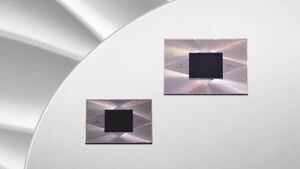
Our progress toward quantum error correction
"Three years ago, our quantum computers were the first to demonstrate a computational task in which they outperformed the fastest supercomputers. It was a significant milestone on our roadmap toward building a large-scale quantum computer, and the “hello world” moment so many of us had been hoping for. Yet in the long arc of scientific progress it was just one step towards making quantum applications meaningful to human progress. Now, we’re taking another big step forward: For the first time ever, our Quantum AI researchers have experimentally demonstrated that it’s possible to reduce errors by increasing the number of qubits. In quantum computing, a qubit is a basic unit of quantum information that can take on richer states that extend beyond just 0 and 1. Our breakthrough represents a significant shift in how we operate quantum computers." [...]
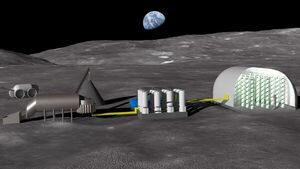
Farming on the Moon
"Sooner or later, settlers on the Moon will have to become farmers. A new ESA Discovery project led by Norway’s Solsys Mining is looking into the treatment of lunar soil to create fertiliser for growing plants. The good news is that analysis of lunar samples returned to Earth in the past by Moonwalkers and robots shows sufficient essential minerals are available for plant growth, apart from nitrogen compounds. The bad news is that lunar soil (or ‘regolith’) compacts in the presence of water, creating problems for plant germination and root growth. Hydroponic farming therefore offers a practical alternative; this type of agriculture involves feeding plant roots directly with nutrient-rich water, without the need for soil. The potential is still there however to put lunar regolith to work, on the basis of ‘in-situ resource utilisation’ – or living off the land." [...]
Ciência e Tecnologia
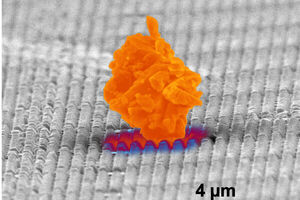
Anti-Dust Tech Paves Way for Self-Cleaning Surfaces
"Dust is a common fact of life, and it’s more than just a daily nuisance – it can get into machinery and equipment, causing loss of efficiency or breakdowns. Researchers at The University of Texas at Austin partnered with North Carolina-based company Smart Material Solutions Inc. to develop a new method to keep dust from sticking to surfaces. The result is the ability to make many types of materials dust resistant, from spacecraft to solar panels to household windows. The research is published in ACS Applied Materials & Interfaces. “What we’ve demonstrated here is a surface that can clean itself,” said Chih-Hao Chang, an associate professor in the Cockrell School of Engineering’s Walker Department of Mechanical Engineering and a lead author of the study. “Particulates aren’t able to stick to the surface, so they come off using just the force of gravity.” In tests, the researchers piled lunar dust on top of their engineered surfaces and then turned each surface on its side." [...]

New Quantum Sensing Technique Reveals Magnetic Connections
"A research team supported by the Q-NEXT quantum research center demonstrates a new way to use quantum sensors to tease out relationships between microscopic magnetic fields. Say you notice a sudden drop in temperature on both your patio and kitchen thermometers. At first, you think it’s because of a cold snap, so you crank up the heat in your home. Then you realize that while the outside has indeed become colder, inside, someone left the refrigerator door open. Initially, you thought the temperature drops were correlated. Later, you saw that they weren’t." [...]
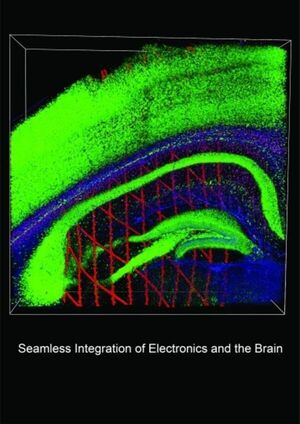
For the first time, it’s possible to record long-term electrical activity in a single brain cell
"When a person experiences a happy or sad mood, which brain cells are active? To answer that question, scientists need to understand how individual brain cells contribute to a larger network of brain activity, and what role each cell plays in shaping behavior and overall health. Until now, it’s been difficult to get a clear view into how brain cells in living animals behave over extended periods of time. But Jia Liu’s group at the Harvard John A. Paulson School of Engineering and Applied Sciences (SEAS) has developed an electronic implant that collected detailed information about brain activity from a single cell of interest for more than a year. Their findings, based on research in mice, are reported in Nature Neuroscience. “This research solves a fundamental issue – the challenge of creating a brain-electronic interface that does not disturb brain function or degrade over time,” says Liu, who is an assistant professor of bioengineering at SEAS, where he leads a lab dedicated to bioelectronics." [...]
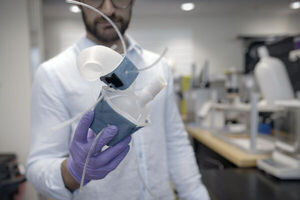
Custom, 3D-printed heart replicas look and pump just like the real thing
"The soft robotic models are patient-specific and could help clinicians zero in on the best implant for an individual. No two hearts beat alike. The size and shape of the the heart can vary from one person to the next. These differences can be particularly pronounced for people living with heart disease, as their hearts and major vessels work harder to overcome any compromised function. MIT engineers are hoping to help doctors tailor treatments to patients’ specific heart form and function, with a custom robotic heart. The team has developed a procedure to 3D print a soft and flexible replica of a patient’s heart." [...]
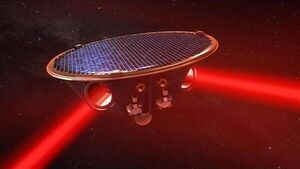
Green light for Dutch LISA-contribution
"A Dutch consortium in which UvA researchers Samaya Nissanke and Michael Wise are involved, as well as several members of Nikhef, received a €12 million Road Map grant that allows the consortium to become an important partner in the LISA mission of ESA and NASA. LISA will be the first space-based gravitational wave detector. The Dutch participation will also pave the way for the Dutch role in LISA’s terrestrial cousin – the Einstein Telescope. LISA The Laser Interferometer Space Antenna (LISA) consists of three spacecraft that, starting in 2035, will follow the Earth in its orbit around the Sun. By continuously measuring their relative distances, the detectors will detect gravitational waves coming from elsewhere in the universe. In this way, LISA’s arms cover a distance of 2.5 million kilometres, allowing the detector to measure gravitational waves of longer wavelengths than its terrestrial counterparts." [...]

A new chip for decoding data transmissions demonstrates record-breaking energy efficiency
"The chip, which can decipher any encoded signal, could enable lower-cost devices that perform better while requiring less hardware. Imagine using an online banking app to deposit money into your account. Like all information sent over the internet, those communications could be corrupted by noise that inserts errors into the data. To overcome this problem, senders encode data before they are transmitted, and then a receiver uses a decoding algorithm to correct errors and recover the original message. In some instances, data are received with reliability information that helps the decoder figure out which parts of a transmission are likely errors. Researchers at MIT and elsewhere have developed a decoder chip that employs a new statistical model to use this reliability information in a way that is much simpler and faster than conventional techniques." [...]
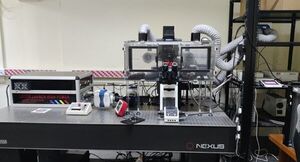
Neuromorphic camera and machine learning aid nanoscopic imaging
"In a new study, researchers at the Indian Institute of Science (IISc) show how a brain-inspired image sensor can go beyond the diffraction limit of light to detect miniscule objects such as cellular components or nanoparticles invisible to current microscopes. Their novel technique, which combines optical microscopy with a neuromorphic camera and machine learning algorithms, presents a major step forward in pinpointing objects smaller than 50 nanometers in size. The results are published in Nature Nanotechnology. Since the invention of optical microscopes, scientists have strived to surpass a barrier called the diffraction limit, which means that the microscope cannot distinguish between two objects if they are smaller than a certain size (typically 200-300 nanometers). Their efforts have largely focused on either modifying the molecules being imaged, or developing better illumination strategies – some of which led to the 2014 Nobel Prize in Chemistry. “But very few have actually tried to use the detector itself to try and surpass this detection limit,” says Deepak Nair, Associate Professor at the Centre for Neuroscience (CNS), IISc, and corresponding author of the study." [...]
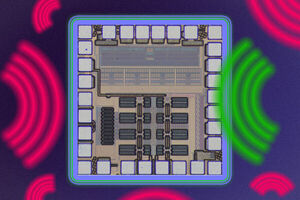
New chip for mobile devices knocks out unwanted signals
"The receiver chip efficiently blocks signal interference that slows device performance and drains batteries. Imagine sitting in a packed stadium for a pivotal football game — tens of thousands of people are using mobile phones at the same time, perhaps video chatting with friends or posting photos on social media. The radio frequency signals being sent and received by all these devices could cause interference, which slows device performance and drains batteries. Designing devices that can efficiently block unwanted signals is no easy task, especially as 5G networks become more universal and future generations of wireless communication systems are developed. Conventional techniques utilize many filters to block a range of signals, but filters are bulky, expensive, and drive up production costs. MIT researchers have developed a circuit architecture that targets and blocks unwanted signals at a receiver’s input without hurting its performance." [...]
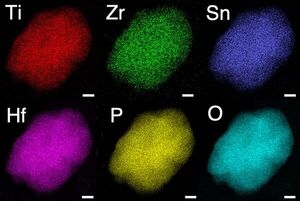
On the Road to Better Solid-State Batteries
"A Berkeley Lab-led team designs next-gen batteries at the atomic level. A team from Lawrence Berkeley National Laboratory (Berkeley Lab) and Florida State University has designed a new blueprint for solid-state batteries that are less dependent on specific chemical elements, particularly critical metals that are challenging to source due to supply chain issues. Their work, reported recently in the journal Science, could advance solid-state batteries that are efficient and affordable. Touted for their high energy density and superior safety, solid-state batteries could be a game-changer for the electric car industry. But developing one that is affordable and also conductive enough to power a car for hundreds of miles on a single charge has long been a challenging hurdle to overcome. “Our work is the first to solve this problem by designing a solid electrolyte with not just one metal but with a team of affordable metals,” said co-first author Yan Zeng, a staff scientist in Berkeley Lab’s Materials Sciences Division." [...]

A new way for quantum computing systems to keep their cool
"A wireless technique enables a super-cold quantum computer to send and receive data without generating too much error-causing heat. Heat causes errors in the qubits that are the building blocks of a quantum computer, so quantum systems are typically kept inside refrigerators that keep the temperature just above absolute zero (-459 degrees Fahrenheit). But quantum computers need to communicate with electronics outside the refrigerator, in a room-temperature environment. The metal cables that connect these electronics bring heat into the refrigerator, which has to work even harder and draw extra power to keep the system cold. Plus, more qubits require more cables, so the size of a quantum system is limited by how much heat the fridge can remove. To overcome this challenge, an interdisciplinary team of MIT researchers has developed a wireless communication system that enables a quantum computer to send and receive data to and from electronics outside the refrigerator using high-speed terahertz waves." [...]

Influence of Electric Fields on the Thermal Properties of Ferroelectric Materials
"North Carolina State University’s new study throws light on how electric fields can be employed to change the thermal properties of ferroelectric materials, enabling engineers to influence the heat flow via materials. From memory storage technologies to ultrasound devices, ferroelectric materials are utilized in a broad range of applications. For this study, the scientists worked with PMN-PT, a ferroelectric material that is employed in technologies like actuators, sensors, and ultrasound devices. The scientists worked with 2.5-mm-thick samples at room temperature to mimic real-world settings. Scientists applied electric fields of different strengths to the material with both DC and AC sources for the study. The current frequency and the timespan that the material was exposed to the electric field were the other variables in their testing." [...]
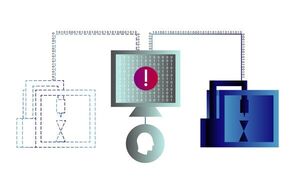
How Digital Twins Could Protect Manufacturers From Cyberattacks
"Detailed virtual copies of physical objects, called digital twins, are opening doors for better products across automotive, health care, aerospace and other industries. According to a new study, cybersecurity may also fit neatly into the digital twin portfolio. As more robots and other manufacturing equipment become remotely accessible, new entry points for malicious cyberattacks are created. To keep pace with the growing cyber threat, a team of researchers at the National Institute of Standards and Technology (NIST) and the University of Michigan devised a cybersecurity framework that brings digital twin technology together with machine learning and human expertise to flag indicators of cyberattacks. In a paper published in IEEE Transactions on Automation Science and Engineering, the NIST and University of Michigan researchers demonstrated the feasibility of their strategy by detecting cyberattacks aimed at a 3D printer in their lab. They also note that the framework could be applied to a broad range of manufacturing technologies." [...]
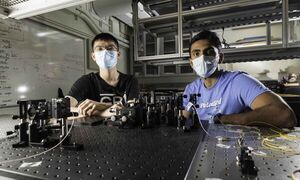
Tapered optical fiber addresses challenge posed by Brillouin scattering
"Rochester researchers achieve strong optical-acoustic interactions with long-lived acoustic waves. When optical beams, consisting of photons, travel through fibers, they cause vibrations that generate acoustic waves, consisting of phonons. The phenomenon, called Brillouin scattering, has been harnessed by researchers to optomechanically “couple” acoustic waves with light waves. This coupling allows information carried by photons to be transduced, or converted, to the phonons, which travel nearly a million times more slowly than light waves. Opto-acoustic coupling has enabled researchers to read and manipulate the transduced information more easily. To date, however, many of the Brillouin scattering techniques researchers have used rely on standard fiber geometries that cause acoustic waves to die out quickly, limiting the efficacy of the coupling." [...]

Theory can sort order from chaos in complex quantum systems
"Development could spark advances in computing, electrochemical, biological systems It’s not easy to make sense of quantum-scale motion, but a new mathematical theory developed by scientists at Rice University and Oxford University could help — and may provide insight into improving a variety of computing, electrochemical and biological systems. The theory developed by Rice theorist Peter Wolynes and Oxford theoretical chemist David Logan gives a simple prediction for the threshold at which large quantum systems switch from orderly motion like a clock to random, erratic motion like asteroids moving around in the early solar system. Using a computational analysis of a photosynthesis model, collaborators at the University of Illinois Urbana-Champaign showed that the theory can predict the nature of the motions in a chlorophyll molecule when it absorbs energy from sunlight. The theory applies to any sufficiently complex quantum system and may give insights into building better quantum computers. It could also, for instance, help design features of next-generation solar cells or perhaps make batteries last longer. The study is published this week in the Proceedings of the National Academy of Sciences." [...]

Finding new life for plastic waste
"Dr. Mohammad Arjmand and his interdisciplinary research team are exploring solutions to the world’s obsession with plastics FROM BOTTLES AND STRAWS, TOYS AND TUPPERWARE to medical stents, eyewear and even tea bags, plastic is everywhere in our society. Although the meteoric rise of plastic was the result of its economy and ease of production, the question now is, what do we do with the estimated 380 million tonnes of plastic waste produced globally each year? This wicked problem was something UBC Okanagan’s Dr. Mohammad Arjmand knew he could help solve thanks to the varied expertise and state-of-the-art plastic processing equipment available at the university. “I’ve been working in plastic engineering for almost 15 years, and was mostly using virgin plastic in my research,” explains the School of Engineering Assistant Professor and Canada Research Chair (Tier 2) in Advanced Materials and Polymer Engineering. “But then I thought, what if I could do the same research with recycled plastic?” In Canada, 79 per cent of plastics are dumped in landfills or natural settings, which creates huge social and environmental problems. “I needed to do something for my community, beyond academia, and that’s where the idea first sparked." [...]
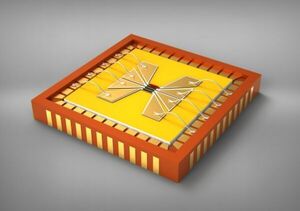
'Metasurface' technology: researchers pave the way for flatter and more energy-efficient screens
"A team of Australian and UK researchers have developed a proof-of-concept technology that could eventually supersede LCDs and LED. A team across three universities – Nottingham Trent University in the UK, UNSW Canberra, and the Australian National University – has developed new 'metasurface’ technology which can offer significant benefits over current liquid crystal displays (LCDs). Their findings are published today in Light: Science & Applications. The metasurfaces are 100-times thinner than liquid crystal cells, offer a tenfold greater resolution and could consume less energy. Today’s screen display market offers a large range of choices, each with its pros and cons. However, factors including production costs, lifespan and energy consumption have kept LCD technology the most dominant and popular technology for screens such as TV sets and monitors." [...]

Electronic metadevices break barriers to ultra-fast communications
"Until now, the ability to make electronic devices faster has come down to a simple principle: scaling down transistors and other components. But this approach is reaching its limit, as the benefits of shrinking are counterbalanced by detrimental effects like resistance and decreased output power. Elison Matioli of the Power and Wide-band-gap Electronics Research Lab (POWERlab) in EPFL's School of Engineering explains that further miniaturization is therefore not a viable solution to better electronics performance. "New papers come out describing smaller and smaller devices, but in the case of materials made from gallium nitride, the best devices in terms of frequency were already published a few years back," he says. "After that, there is really nothing better, because as device size is reduced, we face fundamental limitations. This is true regardless of the material used."" [...]
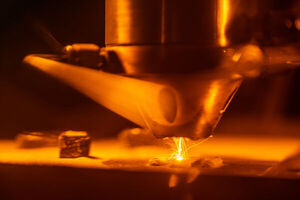
New superalloy could cut carbon emissions from power plants
"As the world looks for ways to cut greenhouse gas emissions, researchers from Sandia National Laboratories have shown that a new 3D-printed superalloy could help power plants generate more electricity while producing less carbon. Sandia scientists, collaborating with researchers at Ames National Laboratory, Iowa State University and Bruker Corp., used a 3D printer to create a high-performance metal alloy, or superalloy, with an unusual composition that makes it stronger and lighter than state-of-the-art materials currently used in gas turbine machinery. The findings could have broad impacts across the energy sector as well as the aerospace and automotive industries, and hints at a new class of similar alloys waiting to be discovered. "We're showing that this material can access previously unobtainable combinations of high strength, low weight and high-temperature resiliency," Sandia scientist Andrew Kustas said. "We think part of the reason we achieved this is because of the additive manufacturing approach." The team published their findings in the journal Applied Materials Today." [...]
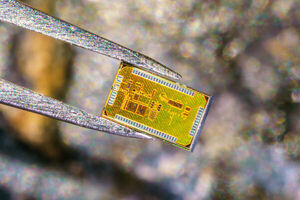
Breakthrough Enables Battery-free Smart Tag Technology
"The system turns your smartphone into an RFID reader, saving costs and reducing e-waste. Imagine you can open your fridge, open an app on your phone and immediately know which items are expiring within a few days. This is one of the applications that a new technology developed by engineers at the University of California San Diego would enable. The technology combines a chip integrated into product packaging and a software update on your phone. The phone becomes capable of identifying objects based on signals the chip emits from specific frequencies, in this case Bluetooth or WiFi. In an industrial setting, a smartphone equipped with the software update could be used as an RFID reader." [...]
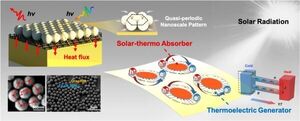
Nanoparticles Self-Assemble to Harvest Solar Energy
"Solar-thermal technology is a promising environmentally friendly energy harvesting method with a potential role to play in solving the fossil fuel energy crisis. The technology transforms sunlight into thermal energy, but it's challenging to suppress energy dissipation while maintaining high absorption. Existing solar energy harvesters that rely on micro- or nanoengineering don't have sufficient scalability and flexibility, and will require a novel strategy for high-performance solar light capture while simultaneously simplifying fabrication and reducing costs. In APL Photonics, from AIP Publishing, researchers from Harbin University, Zhejiang University, Changchun Institute of Optics, and the National University of Singapore designed a solar harvester with enhanced energy conversion capabilities. The device employs a quasiperiodic nanoscale pattern -- meaning most of it is an alternating and consistent pattern, while the remaining portion contains random defects (unlike a nanofabricated structure) that do not affect its performance. In fact, loosening the strict requirements on the periodicity of the structure significantly increases the device's scalability." [...]

Physicists Create New Model of Ringing Black Holes
"When two black holes collide into each other to form a new bigger black hole, they violently roil spacetime around them, sending ripples called gravitational waves outward in all directions. Previous studies of black hole collisions modeled the behavior of the gravitational waves using what is known as linear math, which means that the gravitational waves rippling outward did not influence, or interact, with each other. Now, a new analysis has modeled the same collisions in more detail and revealed so-called nonlinear effects. "Nonlinear effects are what happens when waves on the beach crest and crash" says Keefe Mitman, a Caltech graduate student who works with Saul Teukolsky (PhD '74), the Robinson Professor of Theoretical Astrophysics at Caltech with a joint appointment at Cornell University. "The waves interact and influence each other rather than ride along by themselves. With something as violent as a black hole merger, we expected these effects but had not seen them in our models until now." [...]
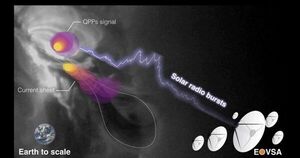
Researchers Discover Mysterious Source of 'Heartbeat-like' Radio Bursts in a Solar Fare
"A solar radio burst with a signal pattern, akin to that of a heartbeat, has been pinpointed in the Sun's atmosphere, according to a new study. In findings published in the journal Nature Communications, an international team of researchers has reported uncovering the source location of a radio signal coming from within a C-class solar flare more than 5,000 kilometers above the Sun's surface. Researchers say the study's findings could help scientists better understand the physical processes behind the energy release of solar flares -- the solar system's most powerful explosions. "The discovery is unexpected," said Sijie Yu, the study's corresponding author and astronomer affiliated with NJIT's Center for Solar-Terrestrial Research. "This beating pattern is important for understanding how energy is released and is dissipated in the Sun's atmosphere during these incredibly powerful explosions on the Sun. However, the origin of these repetitive patterns, also called quasi-periodic pulsations, has long been a mystery and a source of debate among solar physicists."" [...]
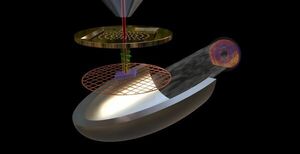
New analysis method developed for nano and quantum materials
"Using electron microscopy to create ultrafast movies of nano-processes. A slow-motion movie on sports television channels shows processes in hundredths of a second. By contrast, processes on the nanoscale take place in the so-called femtosecond range: For example, an electron needs only billionths of a second to orbit a hydrogen atom. Physicists around the world are using special instruments to capture such ultrafast nano-processes in films. Researchers at Kiel University (CAU) have developed a new method for such films that is based on a different physical concept and thus allows further and more precise options for investigation. To do this, they combined an electron microscope with nanostructured metallic thin films that generate very short light pulses." [...]
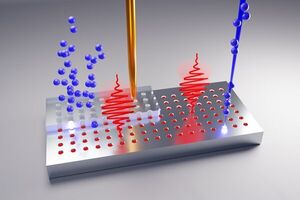
Let there be (controlled) light
"In the very near future, quantum computers are expected to revolutionize the way we compute, with new approaches to database searches, AI systems, simulations and more. But to achieve such novel quantum technology applications, photonic integrated circuits which can effectively control photonic quantum states -- the so-called qubits -- are needed. Physicists from the Helmholtz-Zentrum Dresden-Rossendorf (HZDR), TU Dresden and Leibniz-Institut für Kristallzüchtung (IKZ) have made a breakthrough in this effort: for the first time, they demonstrated the controlled creation of single-photon emitters in silicon at the nanoscale, as they report in Nature Communications. Photonic integrated circuits, or in short, PICs, utilize particles of light, better known as photons, as opposed to electrons that run in electronic integrated circuits. The main difference between the two: A photonic integrated circuit provides functions for information signals imposed on optical wavelengths typically in the near infrared spectrum. "Actually, these PICs with many integrated photonic components are able to generate, route, process and detect light on a single chip," says Dr. Georgy Astakhov, Head of Quantum Technologies at HZDR's Institute of Ion Beam Physics and Materials Research, and adds: "This modality is poised to play a key role in upcoming future technology, such as quantum computing." [...]

Ramping up domestic graphite production could aid the green energy transition
"Given the growing importance of graphite in energy storage technologies, a team of Northwestern researchers has conducted a study exploring ways to reduce reliance on imports of the in high-demand mineral, which powers everything from electric vehicles (EVs) to cell phones. The paper, which published this week in the journal Environmental Science and Technology, is the first natural and synthetic graphite material flow analysis for the U.S., and considers 11 end-use applications for graphite, two waste management stages and three recycling pathways. "If we want to produce more batteries domestically, we're going to need to increase our production of graphite," said Northwestern University chemical engineer Jennifer Dunn. "But the question is, how can we do so in a way that contributes to decarbonization goals?" Dunn is an associate professor of chemical and biological engineering at Northwestern's McCormick School of Engineering and director of the Center for Engineering Sustainability and Resilience. The paper was co-authored by Jinrui Zhang, who at the time of the study initiation was a post-doctoral scholar in chemical and biological engineering, and Chao Liang, previously a member of Northwestern's Institute for Sustainability and Energy (ISEN)." [...]
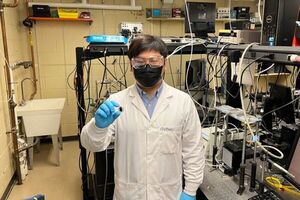
New design enhances durability of inverted perovskite solar cells
"An international team — including U of T Engineering researchers — has developed a new technique to enhance the durability of inverted perovskite solar cells. The advancement is an important step toward commercialization of this emerging photovoltaic technology, which could significantly reduce the cost of solar energy. “Perovskite solar cells have the potential to overcome the inherent efficiency limitations of silicon solar cells,” says U of T Engineering Professor Ted Sargent (ECE), who recently joined the Department of Chemistry and the Department of Electrical and Computer Engineering at Northwestern University. “They are also amenable to manufacturing methods that have a much lower cost than those used for silicon. But one place where perovskites still lag silicon is in their long-term durability. In this study, we used a rational-design approach to address that in a new and unique way.” Unlike traditional solar cells, which are made from wafers of extremely high-purity silicon, perovskite solar cells are built from nano-sized crystals." [...]

Soft Robots Take Steps toward Independence
"Squishy robots can now heal themselves and grow as they explore Constructed from delicate, flexible and lifelike materials, soft robots have the potential to improve on their clunky, metal-bodied predecessors. Such machines could more nimbly explore other planets, gently collect organisms from the ocean depths and even lend surgeons a hand. But stubborn design challenges have long held them back from making it out of the lab and into our lives. Now a new generation of soft robots is navigating, growing and self-repairing its way to meeting researchers' lofty expectations. Squishy materials let robots deform to adapt to changing environments, such as constricting tunnels. Soft robots can also handle fragile materials, such as human organs or brittle rocks, without crushing them." [...]
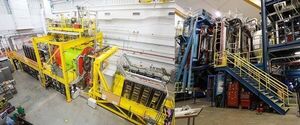
A Trial Run for Smart Streaming Readouts
"The Science Nuclear physics experiments are data intensive. Particle accelerators probe collisions of subatomic particles such as protons, neutrons, and quarks to reveal details of the bits that make up matter. Instruments that measure the particles in these experiments generate torrents of raw data. To get a better handle on the data, nuclear physicists are turning to artificial intelligence and machine learning methods. Recent tests of two streaming readout systems that use such methods found that the systems were able to perform real-time processing of raw experimental data. The tests also demonstrated that each system performed well in comparison with traditional systems." [...]
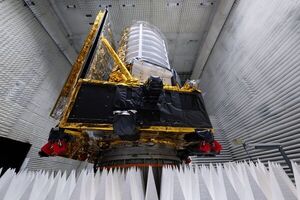
Euclid electromagnetic compatibility tests successful
"ESA’s Euclid mission is undergoing the final test before launch in July 2023. Here it is standing in a special room in the Thales Alenia Space test facilities in Cannes, France, where it successfully underwent electromagnetic compatibility testing. This kind of testing is routine for spacecraft. All electronics emit some form of electromagnetic waves that can cause interference with other devices. Think of the buzz that speakers give out right before an incoming call on a mobile phone. Spacecraft electronics can cause similar interference, but out in space such interference can have disastrous consequences, so all systems must be checked before launch." [...]
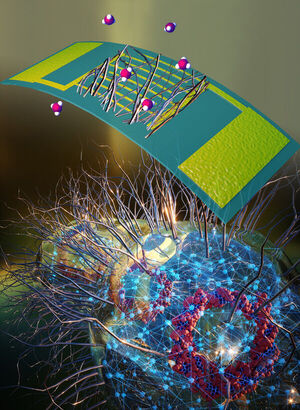
Umass Amherst Researchers Invent “Electronic Nose” Built With Sustainably Sourced Microbial Nanowires That Could Revolutionize Health Monitoring
"Scientists at the University of Massachusetts Amherst recently announced the invention of a nanowire 10,000 times thinner than a human hair that can be cheaply grown by common bacteria and tuned to “smell” a vast array of chemical tracers—including those given off by people afflicted with a wide range of medical conditions, such as asthma and kidney disease. Thousands of these specially tuned wires, each sniffing out a different chemical, can be layered onto tiny, wearable sensors, allowing healthcare providers an unprecedented tool for monitoring potential health complications. Since these wires are grown by bacteria, they are organic, biodegradable and far greener than any inorganic nanowire. To make these breakthroughs, which were detailed in the journal Biosensors and Bioelectrics, senior authors Derek Lovley, Distinguished Professor of Microbiology at UMass Amherst, and Jun Yao, professor of electrical and computer engineering in the College of Engineering at UMass Amherst, needed to look no farther than their own noses. “Human noses have hundreds of receptors, each sensitive to one specific molecule,” says Yao. “They are vastly more sensitive and efficient than any mechanical or chemical device that could be engineered." [...]
Documentação
A documentação é parte essencial do processo de aprendizagem e a Internet além de artigos interessantes de explorar também tem alguma documentação em formato PDF interessante de ler. Todos os links aqui apresentados são para conteúdo disponibilizado livremente pelo editor do livro.
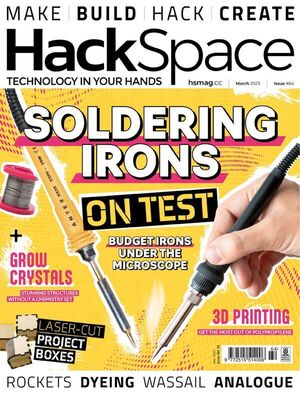
HackSpace magazine #64
"Bodging electrical components together on a breadboard is all very well, but when it comes to making a circuit permanent, you have to learn to solder. We’ve rounded up the best wizarding wands to give you this magical maker power. - Vandalism done properly - A robot that can climb stairs - Air-powered rocketry - Use a laser cutter to make solid wood wobbly" [...]

The MagPi 127
"Hacks & Hints. Get to know your Raspberry Pi better with these 50 top tips! Build a Geiger counter. You never know when it’ll come in handy. Recreate the BBC Micro. Rediscover this classic computer with Raspberry Pi 400!" [...]
Projetos Maker
Diversos Projetos interessantes.

Make your own drum machine: a $70 DIY creation built on Teensy
"Now, $70 may sound cheap, but the cost of putting things into production tends to be literally more than the sum of the parts. (That “three months of work” part should tell you something.) It’s a beautiful project. There’s some messy code and schematics online – not really intended for someone else to try to recreate this, but worth a quick browse if you’re making your own project, like spying on someone else’s workbench. " [...]
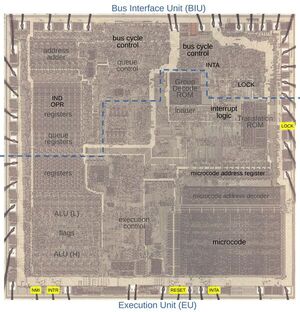
Reverse-engineering the interrupt circuitry in the Intel 8086 processor
"Interrupts have been an important part of computers since the mid-1950s,1 providing a mechanism to interrupt a program's execution. Interrupts allows the computer to handle time-critical tasks such as I/O device operations. In this blog post, I look at the interrupt features in the Intel 8086 (1978) and how they are implemented in silicon, a combination of interesting circuitry and microcode. I've been reverse-engineering the 8086 starting with the silicon die. The die photo below shows the chip under a microscope. The metal layer on top of the chip is visible, with the silicon and polysilicon mostly hidden underneath." [...]

Pingo Color Clock by Illusionmanager
"Pingo is a clock that's all about adding some fun and color to your day! Its name means "I paint" in Latin, and that's exactly what it does - it paints the color of time. It's a completely innovative and one-of-a-kind way to tell time. Plus, the colors it displays can actually influence your mood and emotions throughout the day, making it a unique addition to your space. During the day, Pingo's outer ring is a bright and inviting yellow, just like the sun. This color is known to be warm and friendly, making it a great choice for daylight hours." [...]
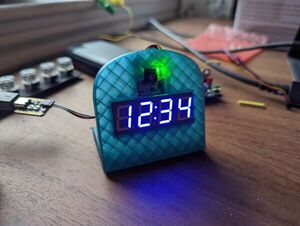
Clock That Is Wrong
"A 7-Segment Clock that displays the wrong time when it detects someone looking at it. You will need: - Adafruit QT Py ESP32-S2 dev board (or any ESP board with a STEMMA QT connector) - Person Sensor - Adafruit 7-Segment Display with I2C backpack (any color) - 2 STEMMA QT/ Qwiic Cables (one should be > 50mm) - (optional) Filament to 3D print the case. " [...]
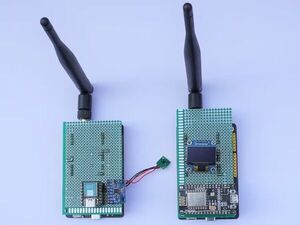
Single Channel LoRa Gateway using Wio E5 LoRa and Blynk
"Single channel LoRaWAN gateway using Seeed studio Wio-E5 Module, ESP8266, And Blynk. In LoRa based system we can transmit the information to Another LoRa, then we can use that information and display it on the Local LCD Display or somewhere. if we need the data to be transmitted far longer distances than the LoRa Coverage? What do we have to do? There are two methods available here 1. If any other networks(4G, 2G, 3G) are available in the particular area we can use LoRaWAN Gateways." [...]
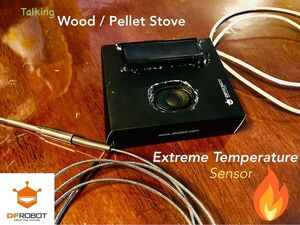
Talking Wood / Pellet Stove High Temperature Sensor
"This tutorial is for building a talking extreme heat temperature sensor! It measures up to 1300˚F and speaks warnings and info! The Story I have a great wood stove, but sometimes wood stoves can be dangerous; for example if they get too hot. You can buy a spring temperature sensor device that magnets to your wood stove, but they use a spring to tell the temperature, and are not very accurate. Also, over time, they can deteriorate! So..." [...]
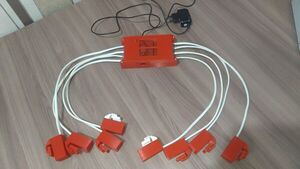
vibrotactile-stimulator
"This DIY device is for vibrotactile stimulation and consists of 8 vibration modules and a NodeMCU controller. The frequency, vibration duration, and other settings can be adjusted using a web browser through WIFI. It can be built for less than $20 (access to a 3D printer required). This device does not have a specific designated use, so it can be used for any purpose of your choice. The initial settings are set to zero, and you will need to adjust them through a graphical interface to your own values. Please note that this device was built by a hobbyist for personal use only and has not been tested to meet any safety standards or requirements." [...]

How to Make a Mini Fridge
"A fridge is a piece of kitchen equipment used to preserve food. It uses cold air to reduce the growth rate of bacteria and slow down the chemical changes happening inside the food, keeping it fresh for longer. Big household fridges utilize a process that involves the compression and depressurization of a refrigerant, that in turn transfers the heat from inside the fridge to the outside, via the cycles of evaporation and condensation. However, mini-fridges usually work with electricity, making them far less effective than big freezers. But in turn, they are much simpler to make at home, as all you need is insulation foam and a small electronic module. On my recent trip to Paris, I had the opportunity to experience the luxury of having a small fridge in my hotel room." [...]
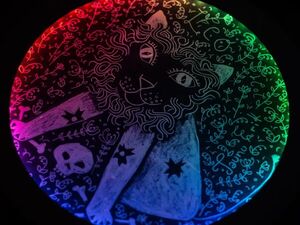
The Lion lamp
"Internally illuminated artwork that reacts to people I had this, not working, ceiling lamp that collected dust. And I was wondering what to do with it and I found a way how to turn it into artwork. And it's relatively easy to do if you have access to some technologies like laser cutting and printing. The picture is printed under plexiglass. I use one of my drawings. You can find the rest on Instagram or my website." [...]

Build Your Own Massive LED Wall on a Budget
"Today I'm teaching you how to build a massive LED wall for under $500. Whether you're an experienced engineer or just a beginner, anyone can make this 7-foot-wide display! The modular design is split into 4 separate panels so that you can make the perfect screen for your space. Each panel is lightweight, making this project more portable than a professional installation costing thousands of dollars. The software I'll teach you how to use allows you to display anything you want with no headache! You can set it to play a 4-hour background video to add color and motion to your room, or just show off a picture of your favorite character." [...]

SAJAC PROJECT : Smart Jacket for Caving
"SAJAC is a smart jacket for caving that helps explorers to monitor environmental conditions and request help when needed using BLE and LoRa Problem Caves, which are quiet places and rarely passed by humans, often have extraordinary beauty. The beauty that is in it is very different from other natural landscapes. Caves often still keep a very pure natural beauty because of the lack of human activity in them. Caving is one of the exploration options to see this natural beauty. Caving has become a hobby that has become increasingly popular in recent decades. Caving is sometimes done just for the pleasure of doing the activity or for physical exercise, still the beginning of exploration, or physics and biology also play an essential role." [...]
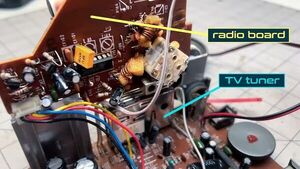
Turn your CRT television into an audio waveform visualizer!
"A simple method for adding a cathode ray tube display to your audio project Story One of my ongoing missions is to incorporate Cathode Ray Tube (CRT) displays into as many of my projects as possible. This technology is sadly disappearing from the world, but due to the sheer quantity of televisions that were produced, there are still plenty of units available. I recently used one as a speech visualizer on my Alexatron robot project, and have also restored a few Soviet-made CRT televisions on my YouTube channel. CRTs are truly beautiful pieces of technology, and I would love to see them claim their rightful place in the maker universe! The concept for this project is that we are going to basically hijack the signal being sent from the television's circuitry to its tube in order to display a realtime visual representation of an audio signal. *** A word of warning: Your CRT can kill you." [...]

Sandwitch Dot IO Display Board
"A 7-inch display was added to the Sandwich Dot IO project in a revision to make it truly wireless and portable. The fan layer, raspberry pi carrier board, and battery bank layer are the three layers that make up this system. The display holder layer is the fourth layer I've included in this revision. The fourth layer houses a 7-inch HDMI display that works with the Raspberry Pi to make the entire system wire-free. Because it operates on an onboard battery, it doesn't need adapters and can thus be carried about and used anywhere. This solution is useful for a variety of Raspberry Pi-related tasks where we need an onboard battery, active cooling, and a display." [...]
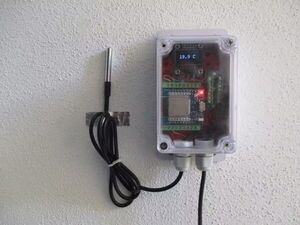
DIY Wi-Fi sensor, no programming, no soldering required*
"Software no-code/low-code platforms made it possible to create applications, writing only a few lines of code, and in some cases, ¡no code at all!. This reduces development effort and deployment time. This project combines two ideas: no-code/low-code software platform and a quick, robust prototyping system that requires no soldering. In this spirit, it is possible to move from an idea, to a materialised device working in a real environment in a few hours. Quick, robust hardware-software prototyping The following application will be built as an example: a WiFi thermometer based on ESP32, DS18B20 temperature sensor, and local I2C indicator. All this enclosed in a waterproof, wall-mountable box and powered by 5V." [...]

Arduino Barometer + Barograph with BME280 Sensor
"Barometer + Barograph that presents the results in graphic form on a 20x4 LCD display. A barograph is a barometer that records the barometric pressure over time in graphical form. This instrument is also used to make a continuous recording of atmospheric pressure. The former Barographs use the pressure-sensitive element, which is linked to a pen arm in such a way that the vertical displacement of the pen is proportional to the changes in the atmospheric pressure. This pen marks pressure changes on specially marked paper that is placed on a disc that rotates 360 degrees over 24 hours. In the picture below you can see what a Barograph from the last century looks like." [...]
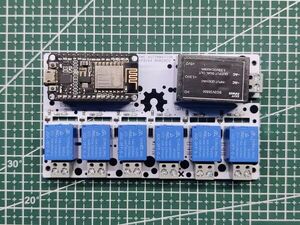
Home Automation Board with NODEMCU Six Outputs
"A NODEMCU based home automation board with six relays and an onboard AC SMPS for powering the device directly from an AC source. This is a Home Automation Board that is based around the NODEMCU ESP8266 Board and Six Relays neatly packed in a nice form factor. We can attach AC or even DC loads with this setup as each relay's NO and NC ports are connected to a screw terminal, which we can connect loads in series with. This DIY home automation system uses an ESP8266 to operate six separate relays to switch six outputs or loads. Every relay is controlled via a web application that may be accessed through any local network browser. This device is version 2 of my earlier home automation board, which featured an esp07S module and only had two outputs." [...]

ESP32 E-Paper Weather Display
"A low-power E-Paper weather display powered by an ESP32 microcontroller. Utilizes the OpenWeatherMap API. Story This is a weather display powered by a wifi-enabled ESP32 microcontroller and a 7.5in E-Paper (aka E-ink) display. Current and forecasted weather data is obtained from the OpenWeatherMap API. A sensor provides the display with accurate indoor temperature and humidity. The project draws ~14μA when sleeping and an estimated average of ~83mA during its ~10s wake period." [...]

Water Quality Monitoring System Based on IOT
"Will guide you to build an IOT Based Water Quality Monitoring system. Story In the 21st century, there were lots of inventions, but at the same time when pollution, global warming, and so on are being formed, because of this, there is no safe drinking water for the world’s pollution. Nowadays, water quality monitoring in real-time faces challenges because of global warming limited water resources, growing population, etc. Hence, there is a need of developing better methodologies to monitor the water quality parameters in real-time. Water pollution is one of the biggest fears of green globalization. To ensure a safe supply of drinking water, the quality needs to be monitored in real-time." [...]
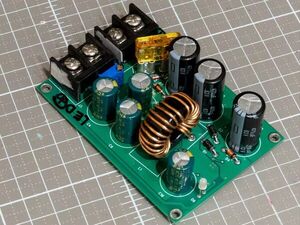
A High Efficiency Buck Converter for 100W COB LED
"The project is an improvement of common DC-DC buck-boost converter module in which is using “FP5139 Asynchronous Boost Controller”. The new design dc-dc buck converter helps me to light up my 100W COB LED module in more efficiency way. I use my 24V lithium-ion battery as power power supply. The circuit provides a constant current drive to the COB LCD module. Circuit Specification : - Voltage input : DC 24V to 52V (max) - Current input: : 4 Amp. (max) - Regulated voltage output : 14.38V - Constant current output : 6.5 Amp (Adjustable) - Conversion Efficiency : 94%@DC24V Input COB LED Specification: - Forward Voltage : DC 12V to 14V - LED Rated Power : 100W (max) This project is modified from the reference circuit of FP5139 switching regulator control IC." [...]
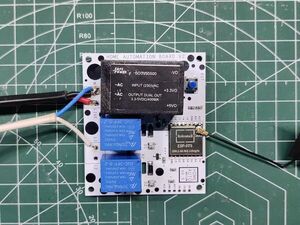
Home Automation Board with ESP8266 Dual Output
"I made a custom home automation board from scratch using the ESP07S module and other mandatory components. Story As technology advances, more and more people are turning to home automation to simplify their lives. From smart thermostats to voice-activated assistants, these devices are designed to make our homes more efficient and convenient. But what if you could create your own custom home automation device tailored specifically to your needs? In this article, we'll show you how to build your own DIY home automation device that can control everything from your lights to your coffee maker. This DIY home automation device uses an ESP8266 to operate two independent relays to switch two outputs or loads." [...]
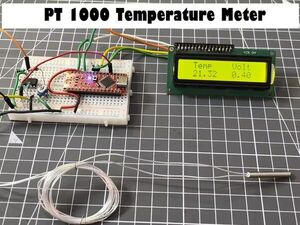
PT-1000 Based Temperature Meter -Arduino
"Here is the small demonstration to the pt1000 based temperature sensor and how to use them with your projects. They are cheap and precise. While working with my hot plate soldering project an idea comes into my mind. Why not to make a super simple are precision temperature sensor which can measure up to 500 degrees on a linear scale. There are many thermocouples, thermistor, NTC and PTC type of temperature measuring units available in market. But due to their nonlinear properties and lower temperature range measurement of hot plate cannot be done." [...]

Arduino Skeleton Seven-Segment Clock
"Let's build a new Style clock using Arduino and PCB If you are a regular follower of mine, then you might have seen my clock-making tutorials. These are clocks of different types and styles that I have made. in this tutorial also I am showing how to build a clock but this one has to be a unique design. So After thinking, searching and designing, I came up with a new skeleton design, the projected structure looks similar to the skeleton that’s why I am calling skeleton clock. The main clock structure was made by carving the PCB. I think it is beautiful." [...]

Breaking out of the Chip Shortage - Attempt 1
"Finding alternative chips to break out of the chip shortage while still being able to get things done, As I have hinted in my recent two posts about UPDI programmers, I am currently looking for a solution to replace the ATMEGA328P chip used in standard Arduino devices, like the UNO and NANO.The global chip shortage seems to be still hitting hard, with these devices (Arduino UNO, NANO), and even bare chips being quite hard to get hold of, and when you do, they are quite more expensive than they used to be. This sent me on a new journey, to find a new chip, that is easy to use, inexpensive, and easy to get hold of. I have found 3 of these chips, starting today with the ATMEGATiny202, The ATtiny202 is a microcontroller using the 8-bit AVR® processor with a hardware multiplier, running up to 20 MHz and 2 KB Flash, 128B SRAM, and 64 bytes of EEPROM in an 8-pin package. The series uses the latest technologies from Microchip with a flexible and low-power architecture, including Event System and SleepWalking, accurate analog features and advanced peripherals. With only 8 pins, of which we can practically use only 5 ( 6 if you have an HV UPDI programmer ). This makes it a desirable solution for small projects, with its current price of about 0.59 USD per chip ( SOIC8 PACKAGE, Element14 ), not breaking the bank either." [...]

ML Hat Cam
"A Raspberry Pi 4B with an HQ camera, 8-50mm zoomable lens with auto focus and ml for filming RC planes... mounted to a hat. " [...]

XIAO ESP32C3 and ChatGPT Usage
"In this tutorial, we will guide users to learn and use XIAO ESP32C3 WiFiClient and HTTPClient libraries, how to connect to the network, how ChatGPT is a new chatbot model, an artificial intelligence technology-powered natural language processing tool, released by OpenAI, an artificial intelligence research lab, on November 30, 2022. It is able to carry out conversations by learning and understanding human language, and can also interact based on the context of the chat, truly chatting and communicating like a human, even performing tasks such as writing emails, video scripts, copywriting, translating, and coding. In embedded systems, ChatGPT can be a good helper to assist us in writing simple programs, or even checking and fixing bugs that appear in the program. What is exciting is that OpenAI officially provides interfaces to call GPT-3 models, which allows us to call these interfaces and deploy this great model into our own embedded systems through a number of methods. Seeed Studio XIAO ESP32C3 is an IoT mini development board based on the Espressif ESP32-C3 WiFi/Bluetooth dual-mode chip. It has excellent radio frequency performance, supporting IEEE 802.11 b/g/n WiFi, and Bluetooth 5 (LE) protocols." [...]
Secção Videos
Videos interessantes.
That's all Folks!



